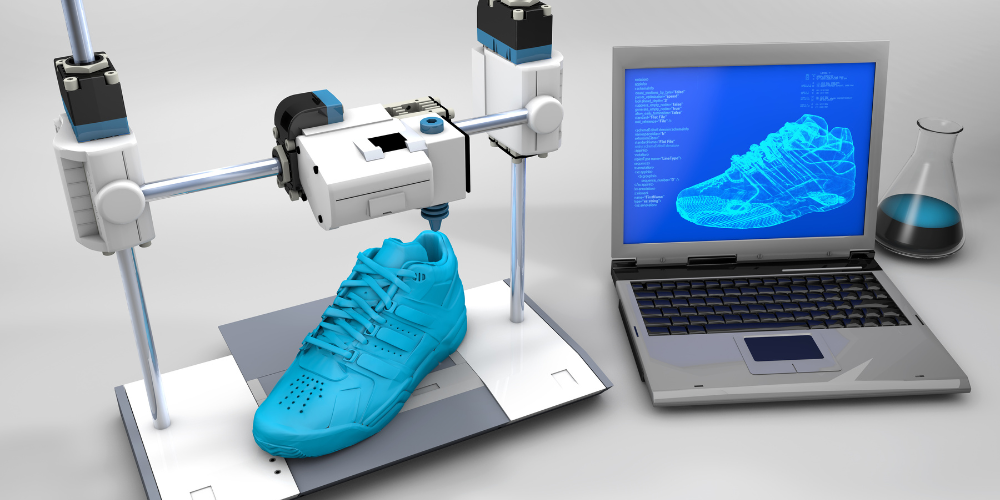3D printing is a technology that has evolved significantly over the last few years. The way it works and what it can be used for has changed as well. In this article, we’ll introduce you to the basics of 3D printing so that you can understand how this amazing technology works and what it can do for you.
How does a 3D printer work?
To understand how a 3D printer works, you need to know how it builds an object. A 3D printer lays down thin layers of material and then bonds them together as it prints. A digital file tells the printer what to make and where each new layer should go relative to the previous one. The nozzle passes over the build surface, applying melted plastic in a very precise pattern that creates the desired shape.
3D printing service is also called additive manufacturing because it adds material rather than removing it (subtractive manufacturing). With some printers, this happens layer by layer; others use a process similar to inkjet printing where droplets are sprayed onto paper or cloth sheets instead of being deposited in thin layers
Different types of 3D printers and materials can be used with them.
Filament-based 3D printers: These are the most common type of printer and let users create objects from plastic filaments. Examples include MakerBot and Ultimaker, which use FDM (fused deposition modeling) technology. It’s possible to find these printers at big-box stores like Best Buy or Target, as well as more specialized retailers such as Amazon.
Laser sintering 3D printers: This method uses lasers to bind together powdered materials into objects with a high degree of precision. For example, you can print out a figurine in solid gold using laser sintering technology—as long as it doesn’t weigh too much!
Directed energy deposition 3D printers: This is similar to SLA printing but uses an ultraviolet light source instead of a laser to cure resin into the solid material layer by layer without any support structures needed for support during printing (like with SLA). An example is Formlabs’ Form 2 printer which uses DED tech on its resin tanks for super-fast processing speeds and improved accuracy over SLA models; it retails for around $4K USD but there are cheaper options available if you’re just looking for something basic!
What types of objects can be created with 3D printing?
3D printing can be used to create just about anything you can imagine. There are a lot of different types of 3D printers on the market, each with its own strengths and weaknesses. Some are better at creating small objects, while others work best for printing large objects. You should look into the different types of 3D printers and decide which one is right for you based on your needs and budget.
In addition to prototyping objects, there are many other uses for 3D printing:
- Manufacturing parts or tools where custom designs are needed (e.g., dental crowns)
- Creating artistic sculptures and models (e.g., architectural models)
3D printing is not just for prototyping.
While it’s easy to think of 3D printing as a tool for creating models or prototypes, it can also be used for art, design, and manufacturing. 3D printers are regularly used to create everything from jewelry to clothing, from toys to tools. These products can be made from a wide range of materials such as plastic or metal—even food!
What is additive manufacturing?
Additive manufacturing is a form of 3D printing. So when you’re talking about additive manufacturing, you’re really just talking about 3D printing.
The most common type of 3D printing involves using layers of material to build up an object one layer at a time in order to create that object. In this way, additive manufacturing is very similar to how clay sculpting works: One layer of clay at a time until your sculpture is complete!
3D printers can use many different types of materials as well – from plastics to metals and even food!
Learn more about how this technology works and what it can do.
3D printing is a technology that makes it possible to create objects by building them up layer by layer. The process begins with a computer model of the object you wish to create, which can then be sent to a 3D printer and printed out. There are many types of 3D printers and materials that can be used with them; some are designed for use in manufacturing environments, while others are designed for hobbyists or home users.
The range of items that can be printed is broad, including everything from jewelry and plastic toys all the way up to metal components for airplanes. 3D printing is already being used extensively in prototyping processes by companies around the world; however, as this technology continues to improve it will likely begin having an impact on how products are manufactured on an industrial scale as well
Conclusion
3D printing is an exciting, emerging technology that has a lot of potentials. It can be used to create complex objects or prototype new designs quickly and cheaply, giving designers more control over their products. As technology improves and becomes more accessible, it will continue to change how we make things!
